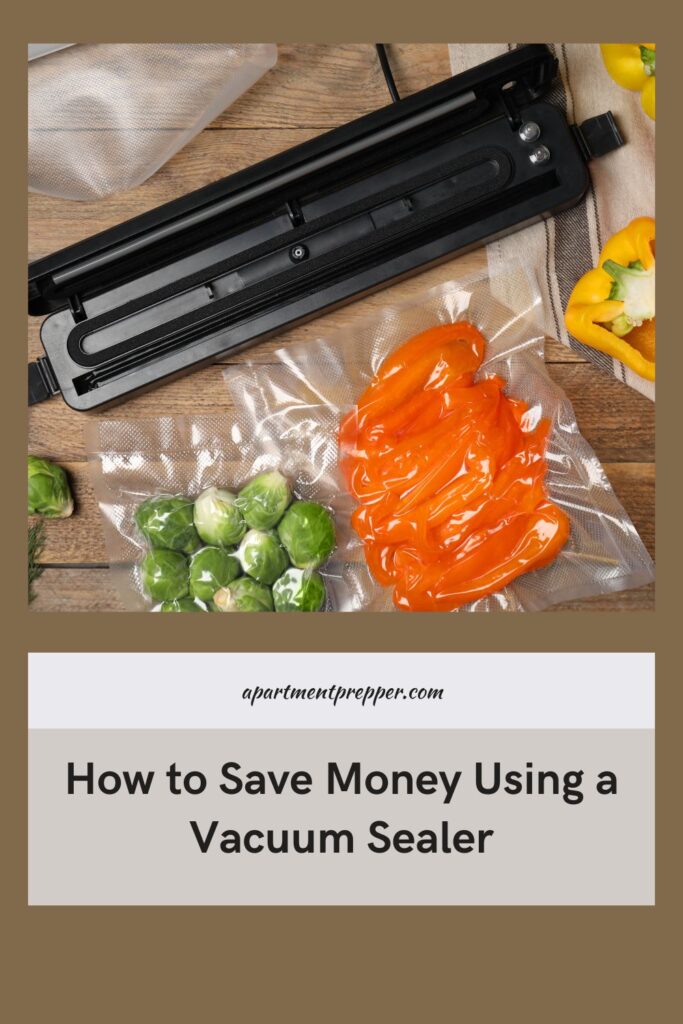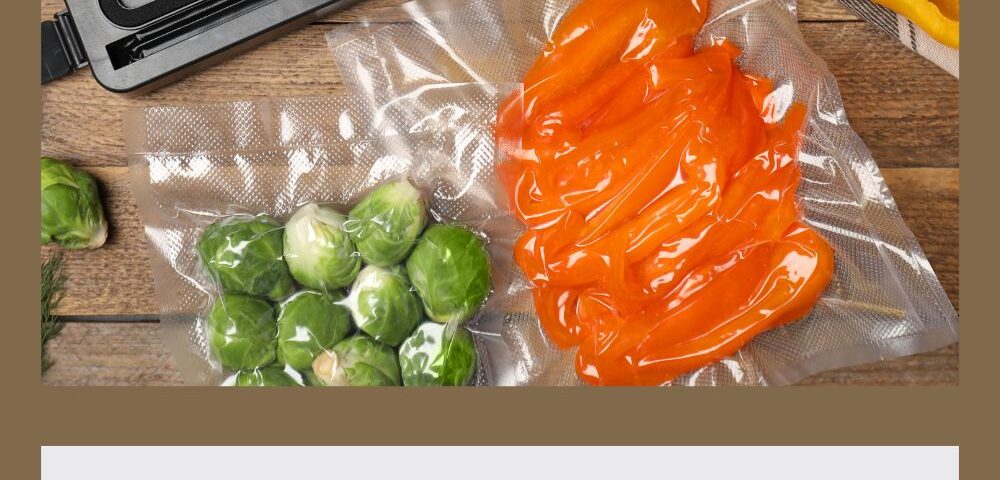Written by Bernie Carr
In today’s economy, finding new ways to save money is more important than ever. One household appliance that often goes underappreciated is the vacuum sealer. I’ve had one for few years now and I can attest it has helped me save money on food. Although I started out using it to store bulk foods, I now use it for so much more. By using a vacuum sealer, you can extend the shelf life of your food, reduce waste, and ultimately some money. This article will explore the numerous benefits of vacuum sealing and provide practical tips on how to make the most of this versatile tool.
The Basics of Vacuum Sealing
First the basics: a vacuum sealer is a gadget that removes air from a package before sealing it. This process prevents the growth of bacteria and mold, which are the primary causes of food spoilage. By keeping food fresher for longer, vacuum sealers help you avoid the frequent trips to the grocery store and reduce the amount of food you throw away.
Benefits of Using a Vacuum Sealer
1. Extended Shelf Life
One of the most significant benefits of vacuum sealing is the extended shelf life of your food. Fresh fruits, vegetables, and meats can last up to five times longer when vacuum-sealed. This means you can buy in bulk without worrying about your food going bad before you can use it.
2. Reduced Food Waste
Food waste is a major issue in many households. By vacuum sealing your food, you can reduce waste significantly. Leftovers can be vacuum-sealed and stored for future meals, ensuring that you get the most out of your food purchases.
3. Bulk Buying Savings
Buying in bulk is often cheaper than purchasing smaller quantities. Vacuum sealing allows you to buy larger quantities of food without the risk of spoilage. This is particularly useful for meat, cheese, and other perishable items.
4. Protection from Freezer Burn
Freezer burn can ruin the taste and texture of your food. Vacuum sealing prevents freezer burn by removing the air that causes it. This ensures that your frozen foods retain their quality and flavor.
5. Space Efficiency
Vacuum-sealed packages take up less space in your refrigerator, freezer, or pantry. This allows you to store more food and keep your kitchen organized.
How to Save Money with a Vacuum Sealer
1. Buy in Bulk
As mentioned earlier, buying in bulk is a great way to save money. With a vacuum sealer, you can purchase larger quantities of food at lower prices and store them safely for longer periods. Look for sales and discounts on bulk items and take advantage of them without the worry of food spoilage.
2. Preserve Seasonal Produce
Seasonal produce is often cheaper and more flavorful. By vacuum sealing fruits and vegetables when they are in season, you can enjoy them year-round without paying the premium prices charged during the off-season. I package fresh fruit like strawberries, blueberries, peaches, and bananas (even the brown ones) and freeze them for later.
3. Prepare Meals in Advance
Preparing meals in advance can save you time and money. Cook large batches of your favorite dishes and vacuum seal individual portions. This way, you have ready-to-eat meals that are easy to reheat, reducing the temptation to order takeout or dine out.
4. Take Advantage of Sales
Grocery stores often have sales on various food items. Take advantage of these sales by purchasing more than you need and vacuum sealing the extra portions. This allows you to benefit from lower prices without worrying about food spoilage. I have bought chocolates, chips, and crackers on sale and stored them using a vacuum sealer. I do use them up in a few months (definitely before a year is up) to make sure they don’t get stale.
5. Reduce Leftover Waste
Instead of throwing away leftovers, vacuum seal them for future use. Leftovers can be repurposed into new meals, saving you both time and money. For example, leftover chicken can be vacuum-sealed and later used in soups, salads, or sandwiches.
Tips for Effective Vacuum Sealing
1. Use High-Quality Bags
Investing in high-quality vacuum sealing bags is crucial. Cheaper bags may not seal properly, leading to air leaks and food spoilage. Look for bags that are designed specifically for vacuum sealing and are BPA-free.
2. Label and Date Your Packages
Always label and date your vacuum-sealed packages. This helps you keep track of what you have and ensures that you use the oldest items first. Rotating your stock in this manner prevents food from being forgotten and going to waste.
3. Pre-Freeze Liquid Items
When vacuum sealing items with a high liquid content, such as soups or sauces, it’s a good idea to pre-freeze them. Pour the liquids into ice trays. Once thoroughly frozen, repackage the frozen soup or stew into the vacuum sealer bags. This prevents the liquid from being sucked into the vacuum sealer, ensuring a better seal.
4. Double Seal for Extra Protection
For added protection, consider double sealing your packages. This is particularly useful for items that will be stored for extended periods or are more prone to spoilage.
5. Store in a Cool, Dark Place
To maximize the shelf life of your vacuum-sealed food, store it in a cool, dark place. Heat and light can degrade the quality of your food over time. I keep vacuum sealed bulk foods like flour, sugar, salt, baking soda, and spices in food grade five gallon buckets.
Conclusion
A vacuum sealer is a valuable investment for any household looking to save money and reduce food waste. By extending the shelf life of your food, allowing you to buy in bulk, and preserving seasonal produce, a vacuum sealer can help you cut down on your grocery bills and make the most of your food purchases. Implement the tips mentioned in this article to get started on your journey to more efficient and cost-effective food storage. And don’t forget to use up and replenish your stock to avoid food waste.
We are an affiliate of Amazon.com, which means we received a small commission if you click through one of our Amazon links when you shop, at totally no cost to you. This helps keep the lights on at the blog. Thanks!
About the author
Bernie Carr is the founder of Apartment Prepper. She has written several books including the best-selling Prepper’s Pocket Guide, Jake and Miller’s Big Adventure, The Penny-Pinching Prepper and How to Prepare for Most Emergencies on a $50 a Month Budget. Bernie’s latest e-book, FRUGAL DIY has just been released on Amazon. Her work appears in sites such as the Allstate Blog and Clark.com, as well as print magazines such as Backwoods Survival Guide and Prepper Survival Guide. She has been featured in national publications such as Fox Business and Popular Mechanics. Learn more about Bernie here.
FB: https://www.facebook.com/apartmentprepper
Instagram: https://www.instagram.com/apartmentpreppers/
Twitter: https://twitter.com/AptPrepper
YouTube: https://www.youtube.com/channel/UC7vOtdbo-wiBeBxD6puCr1Q
Patreon: https://patreon.com/apartmentprepper
Pinterest: https://www.pinterest.com/aptprepper/
Today’s societal climate not supportive of prepping. With your help, we can keep bringing you content that is often suppressed. Help keep Apartment Prepper alive.
Join me on Patreon for ad-free content.

Or Help out via Paypal




One comment